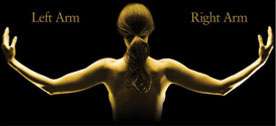Lateral Epicondylitis (Tennis Elbow)
What is lateral epicondylitis or tennis elbow?
On the outside or lateral side of the elbow, the common extensors to the hand and wrist originate from the lateral humeral epicondyle or boney prominence. This common muscle origin consists of fibers of extensor carpi radialis brevis (ECRB), extensor digitorum communis (EDC), extensor digiti minimi (EDM), and extensor carpi ulnaris (ECU), and a part of the supinator. The origin of the ECRB muscle (extends wrist) is the area that is usually involved with this condition. Some of the muscle fibers developed mirco-tears from the bone surface.
What causes lateral epiconylitis or tennis elbow?
Tennis elbow/lateral epicondylitis arises when there is a tear in the common extensor origin at or near the lateral epicondyle. From sports or occupation, the stresses to the origin produce tears in the fibers of the tendon. The tears may be microscopic and because of repetitive trauma, they never heal properly and form scar tissue at the site of the origin.
What are the symptoms of lateral epiconylitis or tennis elbow?
- Tenderness at the lateral epicondyle or .boney prominence at the outside of the elbow
- Pain at the lateral epicondyle.
- Aggravated symptoms with wrist extension.
- Swelling over the lateral epicondyle.
How to diagnose lateral epicondylitis or tennis elbow?
In addition to a careful history of the symptoms described above, an examination will reveal:
- Point tenderness at the lateral epicondyle.
- Occasionally tenderness distally over the supinator muscle.
- Reproduced by passively flexing the fingers and wrist with the elbow fully extended which is simply putting tension on the origin of the ECRB.
- Pain with resisted wrist extension at the lateral epicondyle.
Additional tests may be helpful:
X-rays of the elbow to assess the underlying bone and adjacent joints and to assess the soft tissue for possible calcification. An MRI will be helpful in determining the extent of the damage to the muscle and any possible ligament damage.
Non-surgical treatment of lateral epicondylitis or tennis elbow:
Rest, therapy, NSAIDs (i.e. Advil) or steroids; tennis elbow strap; work modification with lifting with the palm facing up rather than down which takes the tension off the torn muscle; if all of this is not successful, then a Celestone injection can provide significant relief (will inject up to three times if necessary).
Surgical treatment of lateral epicondylitis or tennis elbow:
If all conservative care fails and the patient cannot tolerate the symptoms, then surgery can be very beneficial. An 2 cm incision is made over the lateral epicondyle. The tear in the ECRB origin is identified. Scar tissue and torn muscle is removed. A small amount of the lateral epicondyle may be removed if spurs are present. A small drill hole is made in the bone to create a better healing area. Following surgery the patient is placed in a long arm splint. At approximately 8 to 10 days the patient returns for removal of the sutures and is started on early motion and therapy started. Therapy usually lasts approximately four to six weeks.
How can Dr. Knight help you with lateral epicondylitis or tennis elbow?
Dr. Knight will take a careful history and examination and once he has confirmed the diagnosis he will start a comprehensive conservative program to relieve your pain. In most cases your symptoms will resolve without surgery. If surgery is necessary, a minimally invasive procedure will be recommended to minimize scarring allowing a quick recovery.
Tennis Elbow Testimonial – Nina Taylor
Disclaimer
HandAndWristInstitute.com does not offer medical advice. The information presented here is offered for informational purposes only. Read Disclaimer

